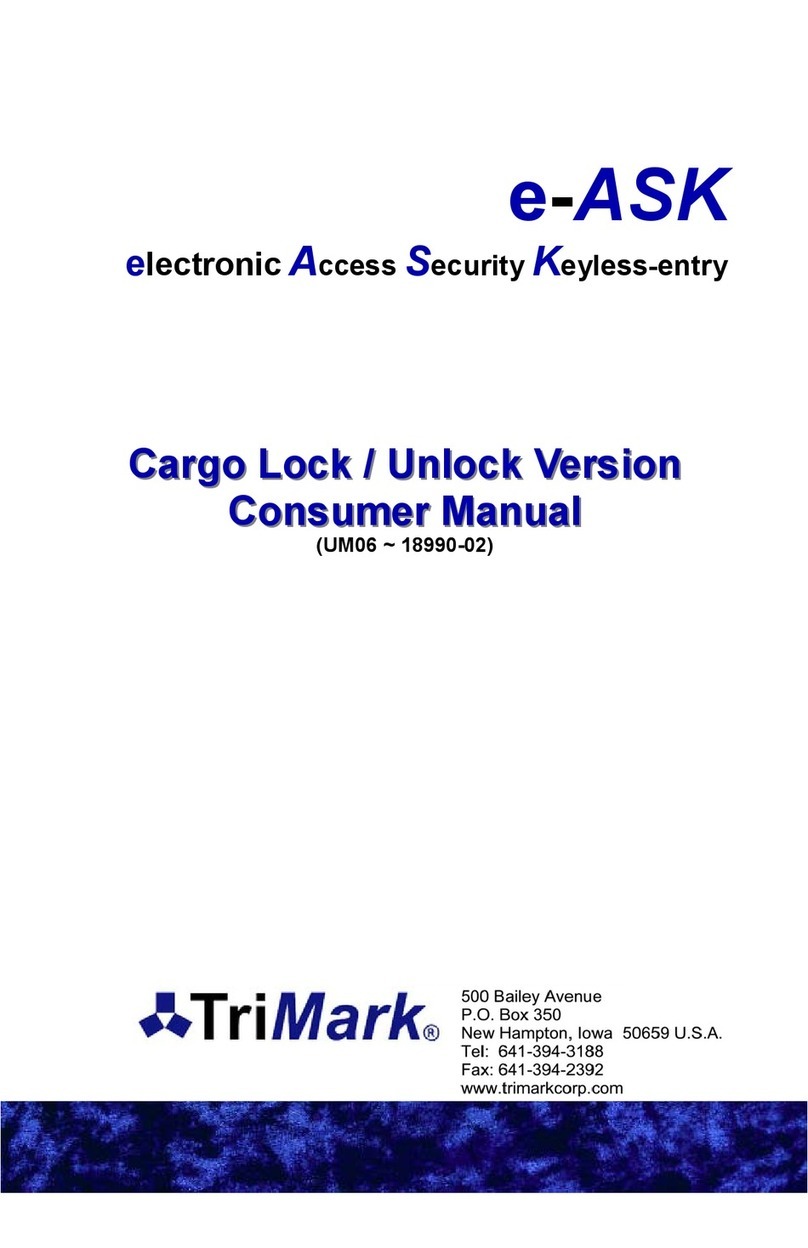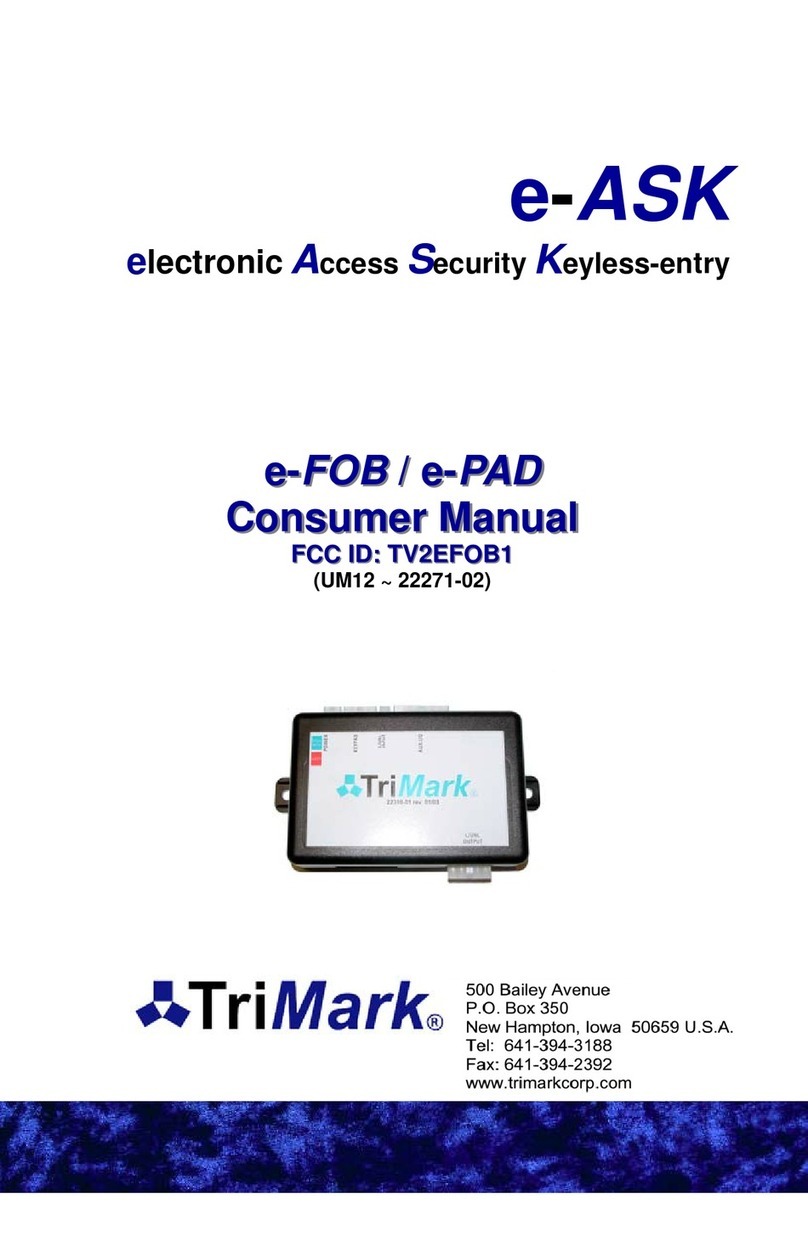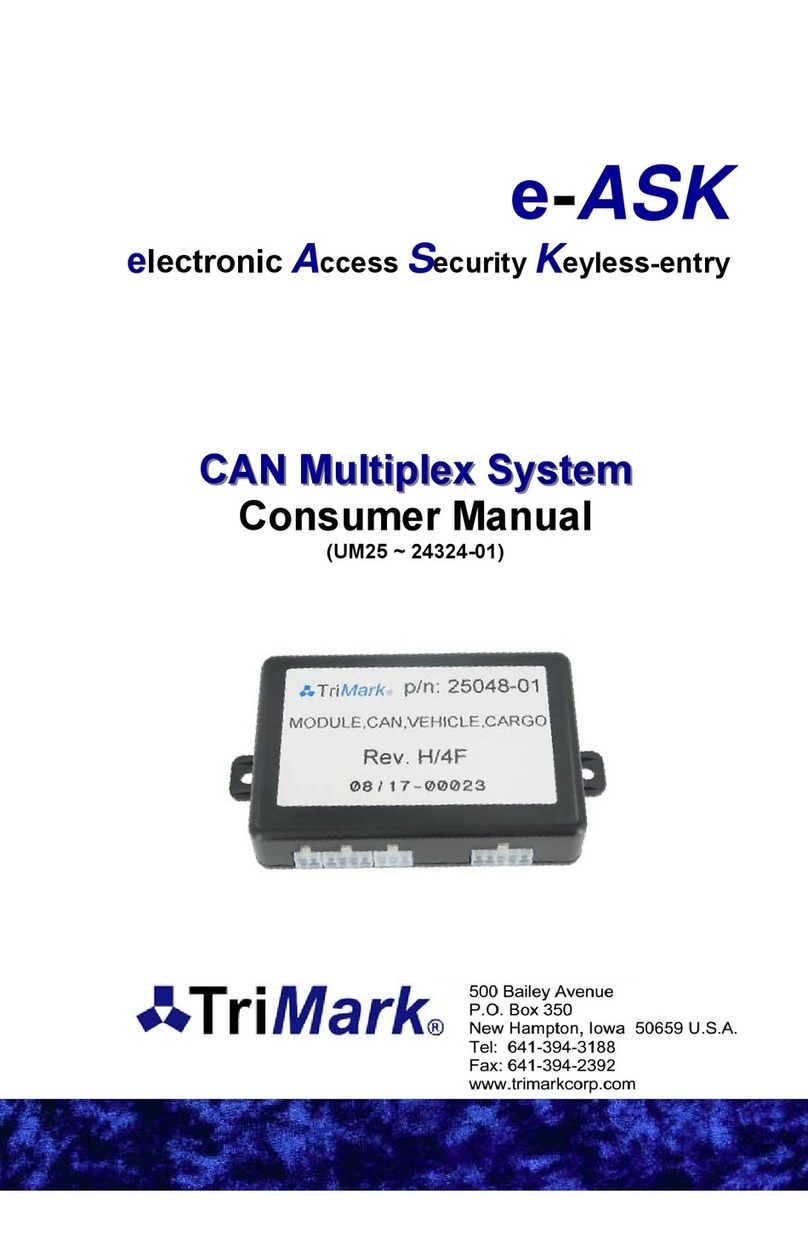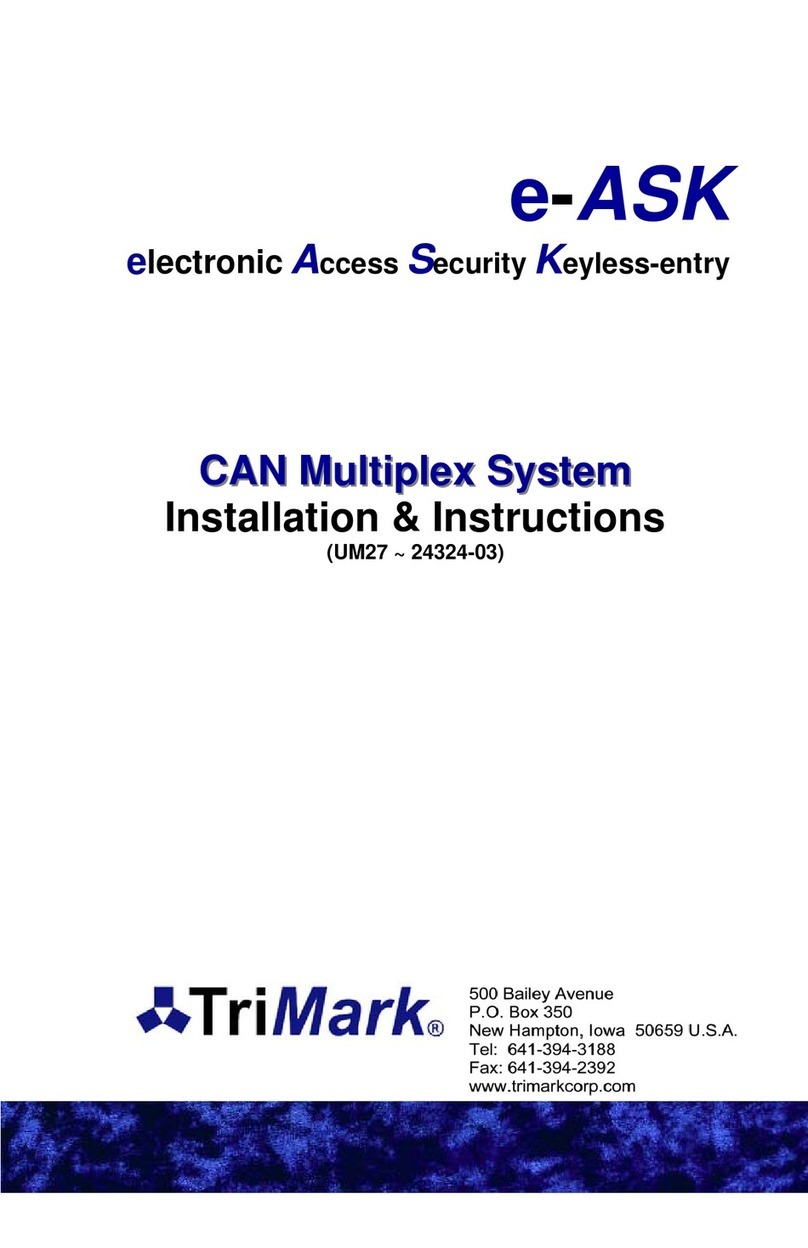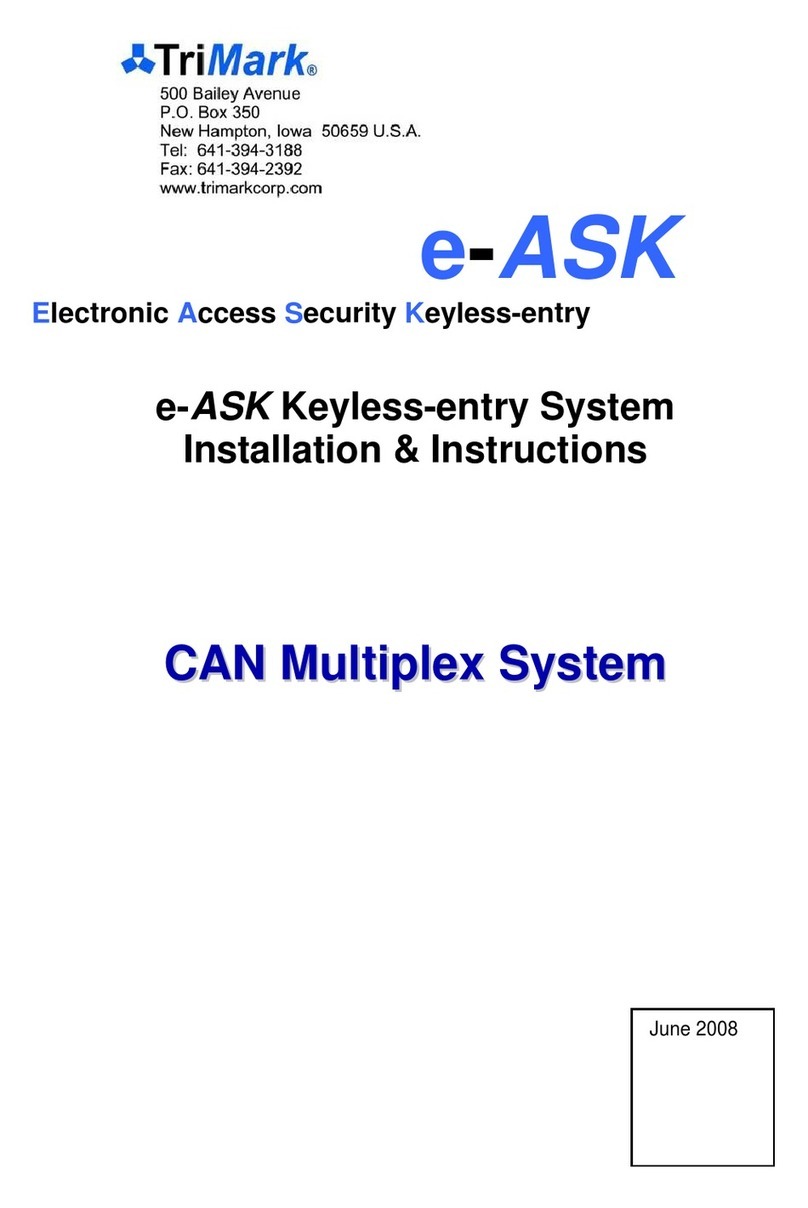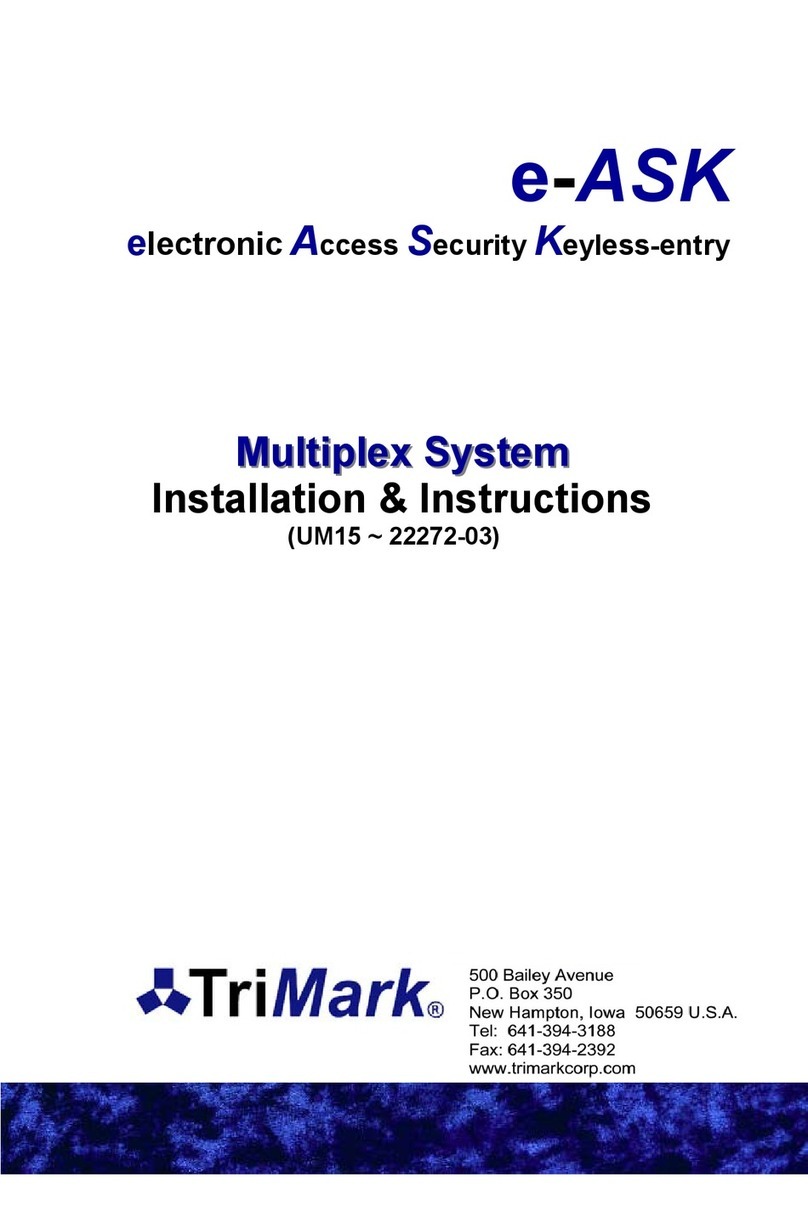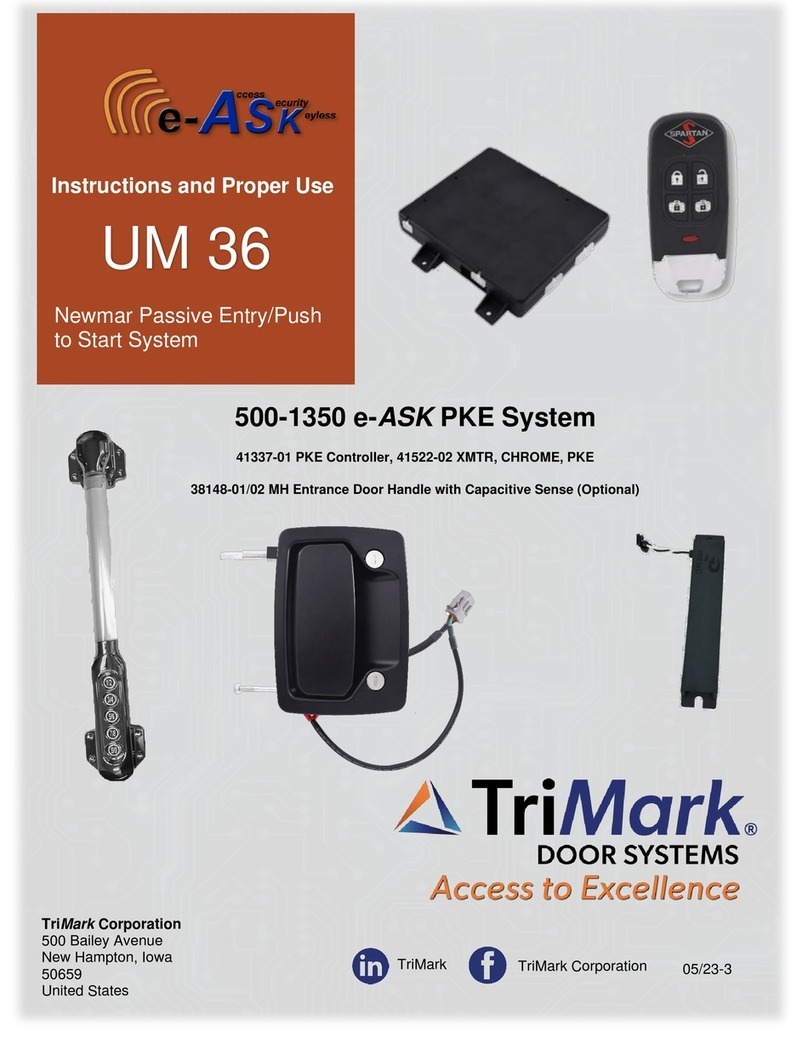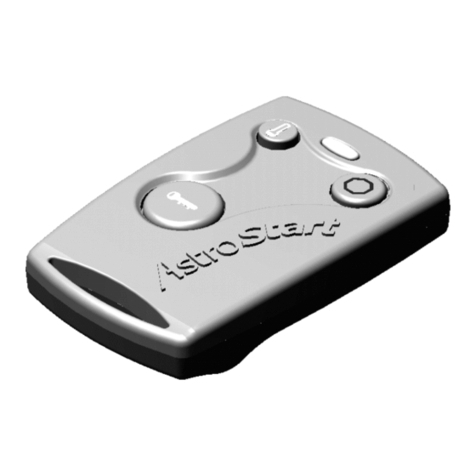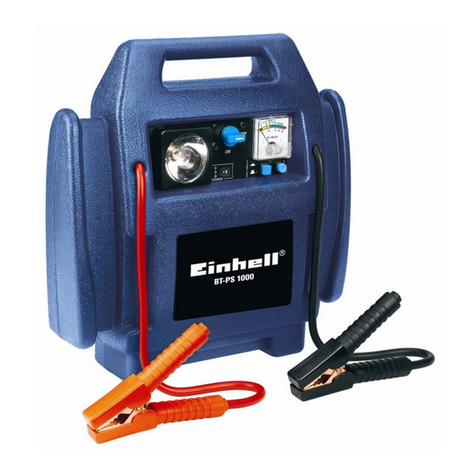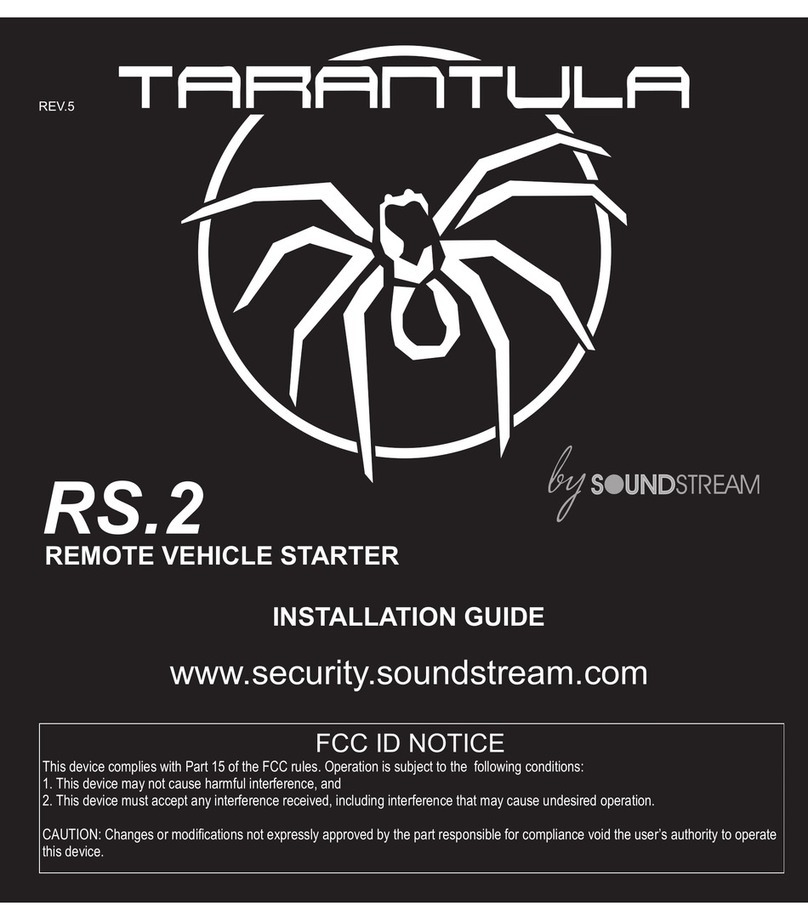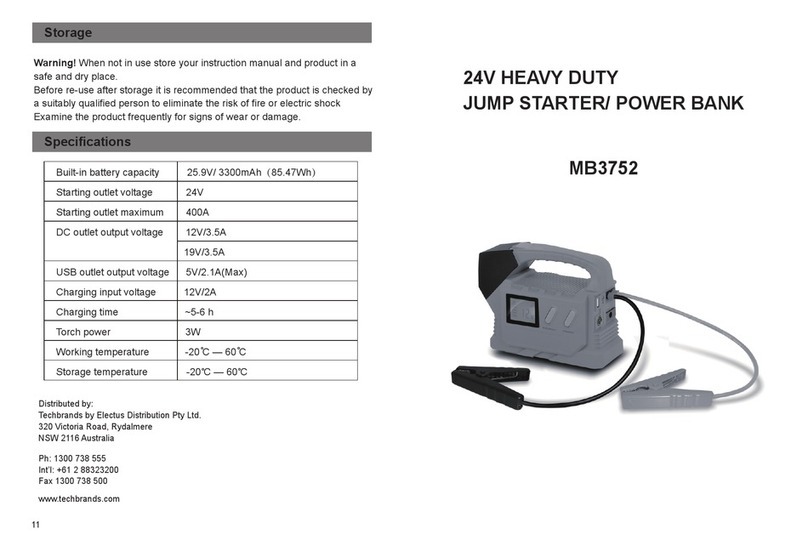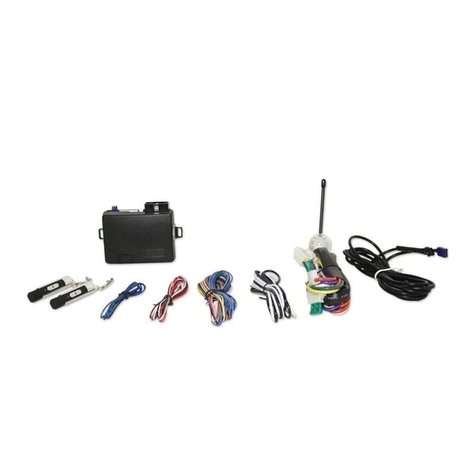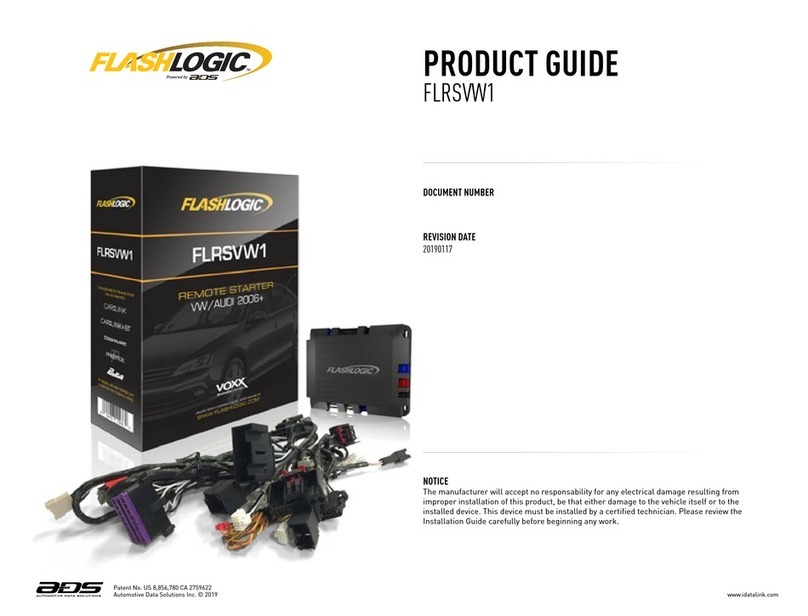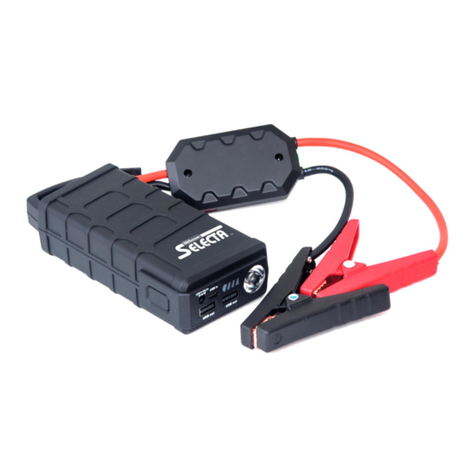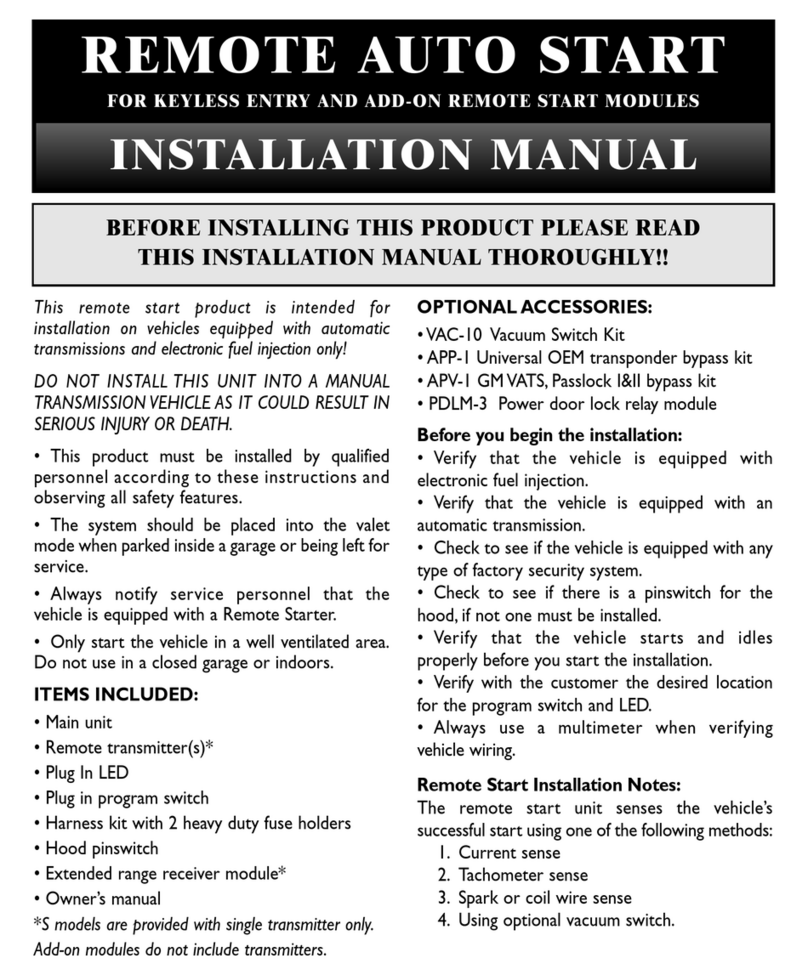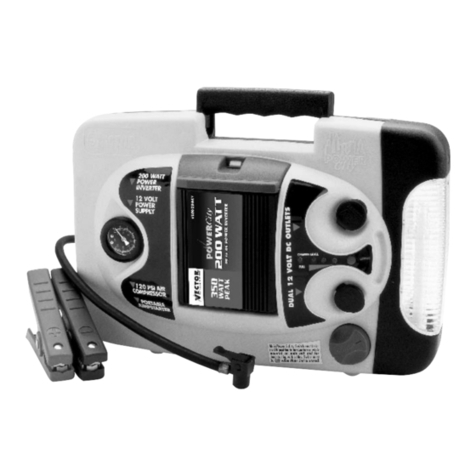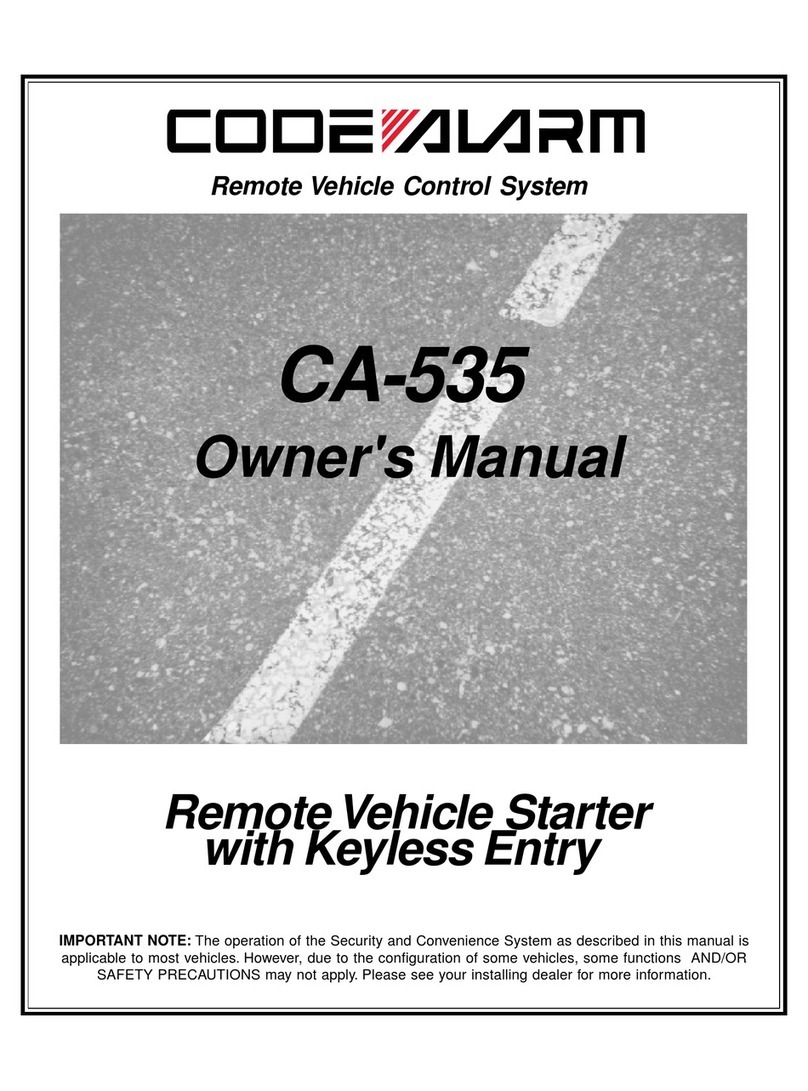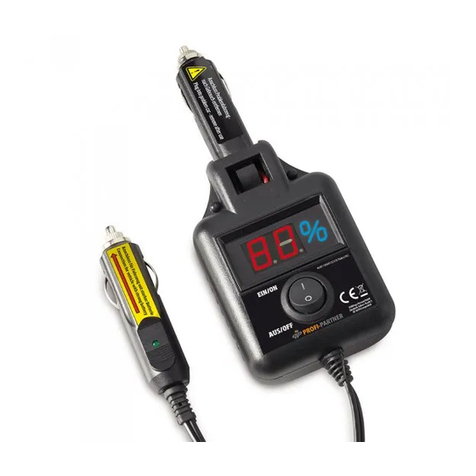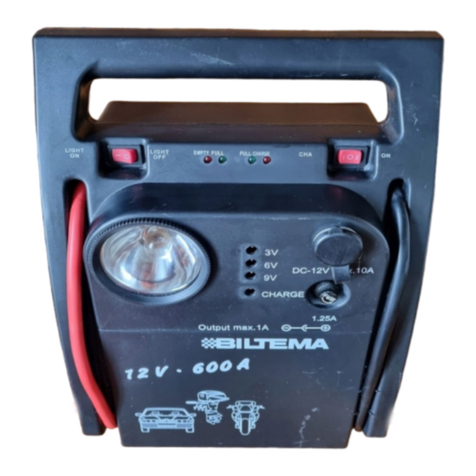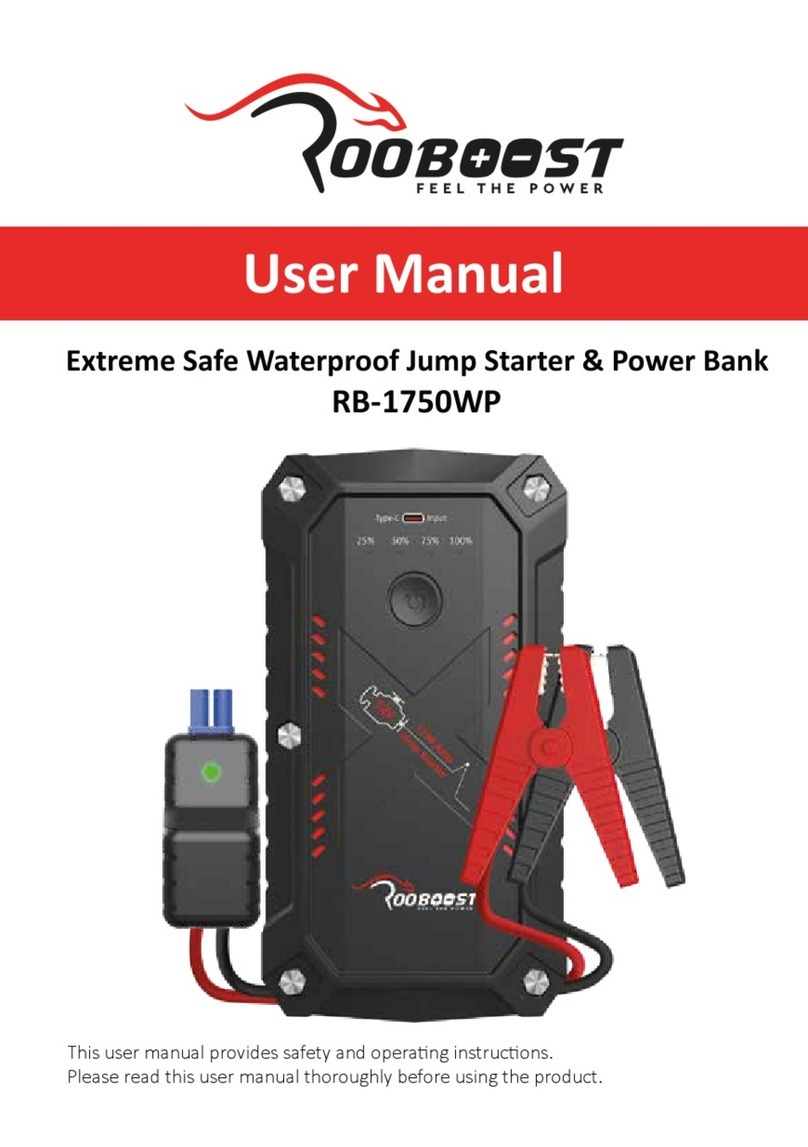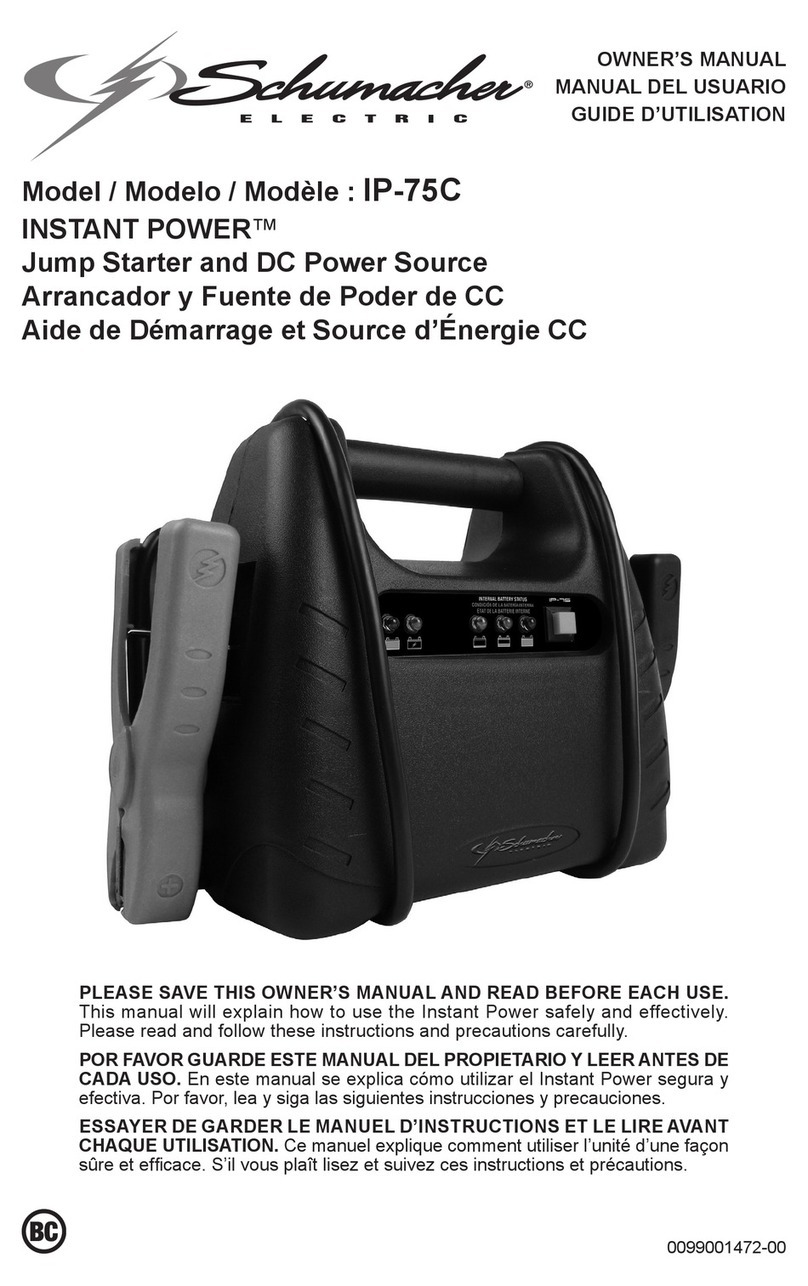
In the event that you have a question regarding the Passive Keyless Entry System,
please contact Spartan RV Customer Service at the following contacts before you
contact TriMark Corporation:
Spartan Recreational Vehicle Owner Support:
800.543.4277
Table of Contents
Introduction.................................................................................. 4
General Component Overview ................................................... 4
e-Controller ............................................................................. 4
e-FOB (37848-01) ................................................................... 4
Lighted Grab Handle with Keypad .......................................... 4
Antenna (36159-01) ................................................................ 5
Standard Operating Procedures - Section 1............................. 6
Push to Start ........................................................................... 6
Running................................................................................... 6
Shutdown ................................................................................ 6
Locking (typical) ...................................................................... 6
Unlocking Entrance (typical) ................................................... 6
Alarm Functionality.................................................................. 6
Arming the Alarm.............................................................. 6
Feedback.......................................................................... 7
Disarming the Alarm ......................................................... 7
Cancelling the Alarm ........................................................ 7
Tripping the Alarm ............................................................ 7
Auto Locking ........................................................................... 7
Auto Lock / Unlock............................................................ 7
e-FOB Operation and Features (37848) - Section 2.................. 8
FOB Functionality.................................................................... 8
Pairing FOB............................................................................. 9
Panic Mode ............................................................................. 9
Activating .......................................................................... 9
Deactivating...................................................................... 9
e-ASK Fob Guidelines…………………………………………...10
Keypad Operation and Features - Section 3............................. 11
Default Access Code ........................................................ 11
Default Authority Code ..................................................... 11
Standard Operation................................................................. 11
Locking ............................................................................. 11
Unlock the Entrance Door ................................................ 11
Unlatch Bay/Cargo Doors................................................. 11
Teaching Keypad New Authority / Access Codes .................. 12
Programming Authority Code ........................................... 12

